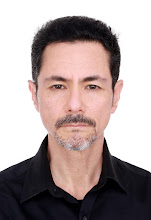(Originally published in the June 20 and the June 27, 2001, issue of the Times of Acadiana)
Hadley Castille vividly remembers the day in 1992 that he found himself in a New Orleans recording studio, preparing to add his distinctive Cajun fiddling to “Big Fran’s Baby,” a song composed by Clint Eastwood for the soundtrack of his film A Perfect World. “We were about to record,” Castille recalls, “and the producer said, ‘Mr. Castille, Mr. Eastwood wants to add a bagpipe to this song.’ Well, I was feeling a little ornery that day, so I said, ‘A bagpipe? Not in my music.’”
Castille stood and turned to leave, only to find himself face-to-face with the New Orleans saxophonist James Rivers, a large, imposing man made larger and more imposing on this day by the bagpipe that he was wearing. “I turned back around,” he remembers, “and said, ‘Well, maybe just this once.’”
Castille laughs heartily but still maintains that the Scottish instrument was an odd choice for what was supposed to be a Cajun song heard on Texas radio in 1963. To set the record straight, he re-recorded the song—sans bagpipe—on his 1995 album, La Musique de les Castilles: The Third Generation (Swallow).
His latest album, Quarante Acres et Deux Mulés/Forty Acres and Two Mules (Master-Trak) is likewise 100% bagpipe free. It’s also as excellent an hour of music as Castille has ever fit on one album. Subtitled Cajun Swing, Two-Steps, Waltzes, Blues and Ballads, it distinguishes itself from the majority of Cajun discs, contemporary and otherwise, in both its stylistic variety and its quotient of original material. Of the 15 songs, 11 were composed or co-composed by Castille and his son Blake, and the four that weren’t range imaginatively from golden-age classics (Harry Choates’ “La Popuet Elastique” and “La Valse du Port Arthur,” Iry LeJeune’s “Grand Nuit”) to modern-day zydeco (Nathan & the Zydeco Cha-Chas’ “Everything on a Hog Is Good”).
Engineered by Castille’s longtime technician of choice Mark Miller and embellished with contributions from David Egan, Sam Broussard, Pee Wee Whitewing, and Lee Benoit, the Quarante Acres et Deux Mulés swings with an ease, elegance, grace, and beauty that justify the high esteem with which Castille and his Sharecroppers Cajun Band have been held both locally and abroad for more than 20 years. Furthermore, originals such as “Radio à Batterie” (which goes “The Western Swing Bob Wills would play / That is why…my Cajun fiddle / swings that way”) and “Helaire Carrier” (about the notorious real-life “bandit of St. Landry Parish”) suggest that, his fiddling skills notwithstanding, Castille’s true gift might be his translation of Cajun history into that most durable of folklore: the story-song—or ballad.
“When I went to Canada in the late ’70s,” Castille says, “it just awakened me to the idea that this was something special. I thought, ‘If it means that much to them, there’s something about this music and culture that we need to preserve.’”
Born in Leonville in 1933, Castille had been performing Cajun music since his Army days during the Korean war. But he didn’t fully grasp the importance of being musically earnest until 1979, when the warm reception that greeted him and his fiddle at a Canadian music festival convinced him that there was an audience for his unique blend of Cajun music and Western swing.
To those who’ve followed Castille since, the excellence of Quarante Acres et Deux Mulés will come as no surprise. But amid the highly accomplished playing, arranging, and storytelling, it’s easy to overlook the fact that Castille is also one of Cajun music’s finest singers: He’s as unlikely to strain after high notes or to sing through his nose as he is to accept too much credit for his vocal prowess. “In the old days,” he explains, “when there was no amplification, Cajun singers would sing in high G to project, to get through the noise. Today you can sing where you feel good and work on your tone rather than try to reach high notes and stay on pitch.”
You can also, it seems, broaden your audience that way. “When I first started playing Canada,” Castille recalls, “people would tell me—in French!—‘We like your music, but we don’t understand what you’re singing about.’ So I began to speak more distinctly to them, and I got to thinking that maybe I should do the same thing as a singer, to try to be clearer with the pronunciation. Now even the locals tell me, ‘We understand what you’re saying.’”
Castille’s desire to make himself understood abroad was also behind his decision to begin playing blue, Louisiana-shaped violins. “We were playing at a fiddle convention in St. Boniface, and after we got through, we went and met some of the folk. A little lady came up to me and said, in French, ‘Mr. Castille, this Cajun country of Louisiana, where is that? Is that close to Nova Scotia?’”
Castille decided that playing a violin in the shape of his home state was preferable to lugging around an atlas and eventually had two such instruments made—the “backwards” one that he’s shown playing on the cover of his 1985 album Going Back to Louisiana/Je suis retourné à la Louisiane (“I thought that the toe of the state would get in my way,” he says, “but it didn’t”) and the “correct” one that he’s holding on the back cover of 1989’s Along the Bayou Teche.
Today, due in large part to Castille’s efforts and those of other gifted Acadiana musicians who think globally while acting locally, the location of “this Cajun country of Louisiana” is less of a mystery than ever. “I realized a long time ago,” Castille reflects, “that there was something about the Cajun fiddle that catches people’s ears, that makes them feel good.
“And the more I studied it,” he says, “the more I came to understand what it takes to get that sound.”



No comments:
Post a Comment